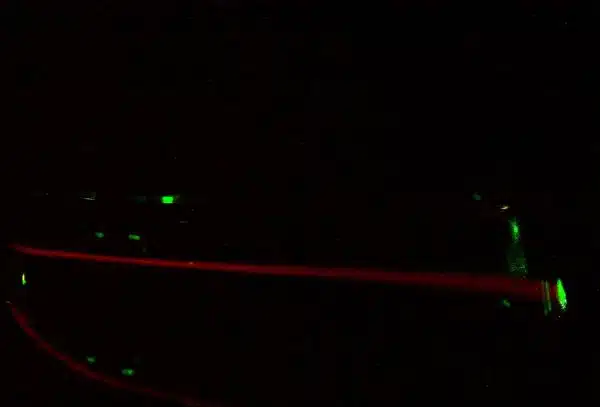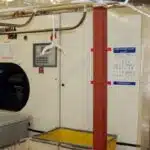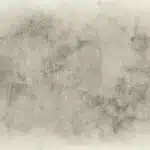Muriatic acid, also known as hydrochloric acid, is a powerful and versatile chemical compound that has a wide range of cleaning uses. This highly corrosive substance is commonly used in industrial settings for cleaning and etching metals, removing rust and scale from concrete surfaces, and the preparation of various chemicals. However, muriatic acid can also be effective for household cleaning purposes such as unclogging drains or removing stubborn stains from tiles.
As an expert on muriatic acid, it is important to emphasize the importance of safety when working with this chemical. Muriatic acid can be dangerous if not handled properly, causing severe burns and respiratory problems if inhaled or exposed to skin. Therefore, it is essential to follow specific safety protocols before using muriatic acid for any cleaning purpose. In this article, we will explore the basics of what muriatic acid is, its various cleaning uses, and the necessary safety precautions to ensure safe handling.
The Science Behind Muriatic Acid
Muriatic acid, also known as hydrochloric acid, is a strong and highly corrosive chemical compound. It is a colorless and pungent-smelling liquid that is commonly used for various industrial and household purposes. Muriatic acid can be produced by dissolving hydrogen chloride gas in water, resulting in a solution with a pH level of around 1.
When muriatic acid comes into contact with certain substances, it can cause chemical reactions that release heat and produce potentially harmful fumes. For example, when muriatic acid is mixed with bleach or other chlorine-containing cleaners, it can create toxic chlorine gas. Therefore, it is crucial to handle muriatic acid with caution and follow proper safety procedures to minimize the risk of injury or damage.
To ensure muriatic acid safety, always wear protective clothing such as gloves, goggles, and a respirator when handling the substance. It should be stored in a cool and dry place away from direct sunlight or heat sources. When using muriatic acid for cleaning purposes, always dilute the solution with water according to the instructions on the label. By taking these precautions, you can safely use muriatic acid for its intended purposes without any adverse effects.
Moving on to the next section about chemical composition and properties of muriatic acid…
Chemical Composition And Properties
Muriatic acid, also known as hydrochloric acid, is a strong, corrosive inorganic acid with the chemical formula HCl. It has a pungent odor and is usually found in a dilute form. Muriatic acid is highly corrosive with a pH of 1.0 and is commonly used as a cleaning agent. It is colorless, has a boiling point of 188°F, a flash point of -24°F, and a melting point of -114°F. Muriatic acid is soluble in water, stable under normal conditions, and highly toxic. It is also very reactive and can cause severe skin and eye irritation.
Chemical Composition
Muriatic acid, also known as hydrochloric acid, is a strong and highly reactive chemical compound. It is composed of hydrogen chloride and water, with a chemical formula of HCl. The acidity level of muriatic acid is extremely high, making it a potent cleaning agent that can dissolve various substances such as metals, concrete, and minerals.
In chemical reactions involving muriatic acid, the hydrogen chloride component becomes the main reacting species. This means that when muriatic acid comes into contact with other materials, the hydrogen chloride will react with them to form new compounds. For example, when muriatic acid is mixed with sodium hydroxide, it forms salt and water through a process called neutralization.
While muriatic acid has many practical uses in cleaning and industrial processes, it is important to handle this chemical with utmost care due to its hazardous nature. Direct exposure to muriatic acid can cause severe burns or damage to the eyes and skin. It should only be used in well-ventilated areas and protective clothing such as gloves and goggles should be worn at all times. Overall, understanding the chemical composition of muriatic acid is crucial for its safe handling and effective use in various applications.
Properties
Understanding the chemical composition of muriatic acid is not enough to fully comprehend this potent compound. One must also take into account its properties, particularly its corrosive properties. Muriatic acid is highly reactive and can cause severe damage to materials it comes in contact with. The acidity level of muriatic acid makes it an excellent cleaning agent, but it should only be used with extreme caution.
In chemical reactions involving muriatic acid, the corrosive properties of hydrogen chloride are utilized. When mixed with other substances, the hydrogen chloride in muriatic acid reacts to form new compounds that can dissolve various materials. This powerful property makes muriatic acid ideal for industrial processes and cleaning tasks that require high levels of efficacy.
However, the corrosive properties of muriatic acid also make it a hazardous substance that requires strict safety protocols when handling. Direct exposure to this compound can cause severe burns and damage to the eyes and skin. It is important to understand not only the chemical composition but also the properties of muriatic acid to ensure safe handling and effective use in various applications.
Strength
As a muriatic acid expert, it is important to delve deeper into the properties of this compound. While its chemical composition and corrosive potential are vital aspects to consider, the strength of muriatic acid is equally significant. The strength of muriatic acid refers to its concentration level or dilution ratio, which can greatly affect its efficacy and safety when used for various applications.
Muriatic acid is available in different strengths, ranging from 10% to 38%. The higher the concentration level, the stronger the acid becomes. However, increased strength also means increased corrosiveness and potential danger when handling. It is crucial to understand the proper dilution ratios for each application to ensure safe and effective use of muriatic acid.
For example, using undiluted or highly concentrated muriatic acid for cleaning tasks can cause irreparable damage to surfaces such as concrete or metal. On the other hand, using too weak a solution may not effectively remove stubborn stains or deposits. As an expert in muriatic acid usage, it is essential to determine the appropriate strength for each application based on factors such as material type and condition, desired outcome, and safety considerations.
Industrial Cleaning Applications
Like a mighty warrior in the field of industrial cleaning, muriatic acid is a powerful tool that can conquer even the toughest grime and stains. This versatile acid is used in a variety of applications, from removing rust and scale from concrete to cleaning metal and masonry surfaces. However, it is important to understand that while muriatic acid can be effective in cleaning, it can also pose significant risks if not handled properly.
Industrial safety should always be a top priority when using muriatic acid. This acid is highly corrosive and can cause severe burns if it comes into contact with skin or eyes. Proper personal protective equipment (PPE), such as gloves, goggles, and respirators, should be worn at all times when handling this chemical. Additionally, it should only be used in well-ventilated areas to prevent inhalation of harmful fumes.
It is also vital to consider the environmental impact of using muriatic acid for industrial cleaning applications. Improper disposal of this chemical can lead to groundwater contamination and harm local ecosystems. To minimize these risks, proper storage and disposal procedures should be followed at all times. By following best practices for industrial safety and environmental responsibility, professionals can effectively leverage the power of muriatic acid for their cleaning needs without causing harm to people or the planet.
As an expert in the field of muriatic acid usage for industrial cleaning applications, I urge all practitioners to prioritize safety and environmental responsibility above all else. With proper precautions in place, we can harness the power of this potent chemical while minimizing risks to ourselves and our surroundings. In the next section, we will explore how muriatic acid is used specifically for rust and scale removal from concrete surfaces.
Rust And Scale Removal From Concrete
Concrete maintenance is an essential aspect of any property owner. The accumulation of rust and scale on concrete surfaces poses a significant threat to the longevity of the structure. Rust stains from metal objects or hard water can be difficult to remove, but muriatic acid is an effective rust remover. When applied correctly, it dissolves the rust stains, leaving behind a clean surface.
However, before using muriatic acid, it’s important to note that it’s a highly corrosive substance. It can cause severe burns if it comes into contact with your skin or eyes. Therefore, you should wear protective gear such as gloves and goggles when handling this chemical. Proper ventilation is also critical because muriatic acid releases fumes that are toxic when inhaled.
Corrosion prevention should be taken seriously during concrete maintenance because it can extend the lifespan of your structure significantly. Once you’ve removed the rust and scale from your concrete surface using muriatic acid, you need to take measures to prevent corrosion from recurring. One way of doing this is by applying a corrosion inhibitor after cleaning the surface. Corrosion inhibitors are designed to protect concrete surfaces by forming a protective barrier against moisture and oxygen.
In summary, removing rust and scale from concrete surfaces is vital for maintaining the integrity of any structure. Muriatic acid is an effective tool for removing these types of stains; however, safety precautions should be implemented when working with this chemical. Additionally, taking steps towards preventing future corrosion will help increase the longevity of your structure considerably. In the next section, we’ll discuss how to prepare chemicals safely before use.
Preparation Of Chemicals
Preparing chemicals is much like preparing a meal. Every ingredient has its own unique characteristics, and it takes a skilled hand to know how to handle them safely. Muriatic acid, also known as hydrochloric acid, is a highly corrosive substance that requires careful handling to avoid injury or damage to property. Before using muriatic acid for any purpose, it is important to understand the proper safety procedures.
Chemical handling is an essential part of the preparation process. When working with muriatic acid, it is crucial to wear proper protective gear such as gloves, goggles, and a respirator mask. Any spills should be immediately cleaned up with a neutralizing agent such as baking soda or lime. Any tools used in the preparation process should be made of materials resistant to corrosive substances.
Safety procedures are put in place for good reason. Muriatic acid can cause serious burns and respiratory issues if not handled properly. When preparing this chemical, make sure you are in a well-ventilated area and never mix it with other chemicals unless specifically instructed to do so by a professional. It is also important to store muriatic acid in a cool, dry place away from direct sunlight and out of reach of children and pets.
Transition: Now that we have covered the basic safety procedures for handling muriatic acid during preparation, let us move on to its household cleaning uses.
Household Cleaning Uses
After discussing the preparation of chemicals in the previous section, we will now delve into the household cleaning uses and safety measures of muriatic acid. Muriatic acid, also known as hydrochloric acid, is a strong and highly corrosive chemical that is commonly used for cleaning and etching surfaces. It is a colorless liquid with a pungent odor that can cause severe burns if it comes into contact with skin or eyes.
In terms of cleaning uses, muriatic acid is an effective solution for removing stains, rust, and mineral buildup on various surfaces such as concrete floors, metal tools, and even swimming pools. However, it should be used with caution because of its high acidity level. When using muriatic acid for cleaning purposes, it is important to wear protective gear such as gloves and goggles to avoid direct contact with the skin or eyes. Additionally, it should be diluted with water before use to reduce its potency.
For those who prefer DIY recipes or green alternatives for cleaning their homes, there are several options available instead of using muriatic acid. For example, vinegar mixed with baking soda can be used to clean drains and remove stubborn stains from surfaces. Lemon juice mixed with salt can also be used to clean brass or copper items without damaging them. These natural solutions are just as effective as muriatic acid but are safer for both humans and the environment.
Moving forward into the subsequent section about unclogging drains, it is important to note that clogged drains can be a common problem in households. While muriatic acid may be effective in unclogging drains by dissolving blockages caused by hair or grease buildup, it should only be used as a last resort due to its potential hazards. There are safer alternatives such as using a plunger or drain snake that can effectively remove blockages without risking harm to oneself or the plumbing system.
Unclogging Drains
Back in the day, before modern plumbing solutions were invented, people used to rely on natural methods to unclog their drains. Nowadays, there are many products available that can help with drain maintenance, but muriatic acid remains one of the most effective options. For those who are not familiar with it, muriatic acid is a solution of hydrogen chloride gas and water.
When it comes to unclogging drains, muriatic acid is an excellent choice due to its high acidity level that can dissolve even the toughest blockages. However, it is essential to follow proper safety precautions when handling this product as it can be hazardous if not used correctly. The acid should never come into contact with skin or eyes and should be stored in a cool and dry place away from children and pets.
To use muriatic acid for unclogging your drains, you will need to dilute it first in water. Once diluted, pour the solution down the drain and let it sit for 15-20 minutes before flushing with hot water. Be sure to wear protective gloves and eyewear during this process. If you have persistent clogs or old pipes that are prone to blockages, we recommend contacting a plumbing professional for assistance.
In summary, muriatic acid is an effective solution for unclogging drains but requires proper handling and dilution. To maintain your drains’ health and prevent future blockages, regular drain maintenance is crucial. In our next section, we will discuss removing stubborn stains from tiles using safe and effective methods.
Removing Stubborn Stains From Tiles
Tile maintenance is an essential part of keeping your home clean and hygienic. Stubborn stains on tiles can often pose a problem that is difficult to resolve with regular cleaning methods. However, there are several cleaning agents available in the market that can effectively remove these stains. One such agent is muriatic acid.
Grout cleaning is an important aspect of tile maintenance. Grout between tiles tends to accumulate dirt and grime over time, making it look unclean and unsightly. Muriatic acid can be used to remove stubborn stains from grout, restoring its original color and shine. It is recommended to dilute the acid with water before use as it can be very potent in its concentrated form.
It is important to note that muriatic acid should be handled with extreme caution as it can cause severe burns and respiratory problems if not used properly. Protective gear such as gloves, goggles, and a mask should be worn while using the acid. Additionally, proper ventilation should be ensured by working in an open area or using a fan to circulate air. In the subsequent section about safety precautions before use, we will discuss in detail how to handle muriatic acid safely to avoid any mishaps during tile cleaning.
Safety Precautions Before Use
Precautionary measures are necessary when handling muriatic acid. This is an extremely corrosive substance that can cause severe burns and respiratory issues if not handled with care. It is important to keep in mind that even small amounts of exposure to this acid can have serious consequences.
One of the most important handling techniques for muriatic acid is to always wear gloves and eye protection. In addition, it is crucial to work in a well-ventilated area to avoid inhaling fumes. If you are working indoors, ensure that there is proper ventilation and that you are wearing a respirator or mask designed for use with acid vapors.
Another precautionary measure to take when handling muriatic acid is to store it properly. This substance should be kept in a cool, dry place away from other chemicals or materials that could react with it. Always check the label before using any chemical product and follow the instructions carefully. With these precautions in mind, you can safely handle muriatic acid without putting yourself or others at risk.
Moving forward into the subsequent section about protective clothing and gear, it is essential to understand what items you need to wear when handling muriatic acid. By taking the necessary precautionary measures and utilizing appropriate handling techniques, combined with protective clothing and gear, you can ensure both your safety and the effectiveness of your cleaning task.
Protective Clothing And Gear
As an expert in muriatic acid, it is essential to emphasize the importance of safety measures before using this chemical. Muriatic acid is a highly corrosive substance that can cause severe damage to human skin and eyes. Therefore, it is crucial to take necessary precautions before handling this chemical. One of the essential safety measures is to wear recommended clothing.
Recommended clothing for handling muriatic acid includes a long-sleeved shirt, pants made of heavy-duty fabric such as denim or canvas, gloves made of rubber or neoprene, and protective eyewear. It is also advisable to wear boots with a steel toe cap to protect your feet from accidental spills or splashes. These clothing items should fit snugly and cover all exposed skin areas.
In addition to wearing recommended clothing, proper ventilation is another critical measure when dealing with muriatic acid. The fumes produced by the chemical can be harmful if inhaled in large quantities. Therefore, it is essential to have adequate ventilation in the area where you are working with the chemical. Open windows or doors and use fans or an exhaust system to ensure proper air circulation. In summary, taking necessary precautions like wearing recommended clothing and ensuring proper ventilation will help minimize the risks associated with handling muriatic acid.
Proper Ventilation
Proper Ventilation: The Breath of Life
As an avid user of muriatic acid, you must always prioritize your safety. One such safety measure is proper ventilation. Imagine a bird with clipped wings trapped in a cage, gasping for air—this is exactly how it feels to inhale the fumes of muriatic acid without proper ventilation. Therefore, always ensure that there is enough air circulation in the room where you are working with the acid.
The Importance of Ventilation
- Proper ventilation ensures that harmful fumes are removed from the work area.
- It helps to prevent respiratory problems and other health issues caused by inhaling these fumes.
- Without proper ventilation, one may experience symptoms such as coughing, shortness of breath, and chest pains.
Dangers of Inhaling Fumes
- Inhaling fumes from muriatic acid can cause severe respiratory distress.
- Prolonged exposure can cause damage to the lungs and lead to chronic health problems.
- Always wear protective gear when working with muriatic acid to prevent inhalation of dangerous vapors.
Remember, safety should be your top priority when handling muriatic acid. Proper ventilation is essential for your well-being while using this chemical. Don’t put yourself at risk by neglecting this crucial safety measure. In the next section, we will discuss best practices for handling and storage.
Handling And Storage
Proper storage and safe handling of muriatic acid are crucial to ensure that it does not cause harm to individuals or the environment. When storing muriatic acid, it is important to keep it in a cool, dry, and well-ventilated area away from direct sunlight. It should be stored in a container made of materials that are compatible with the acid, such as glass or high-density polyethylene. Additionally, the container should have a tight-fitting lid to prevent accidental spills.
When handling muriatic acid, personal protective equipment (PPE) must be worn at all times. This includes gloves, goggles, and an apron. It is also important to avoid inhaling the fumes by working in a well-ventilated area or wearing a respirator if necessary. Muriatic acid should never be mixed with other chemicals unless specific instructions state otherwise.
Proper storage and safe handling of muriatic acid not only protects individuals but also ensures that the chemical does not harm the environment. Improper disposal of muriatic acid can lead to contamination of water sources and soil. Therefore, it is important to follow proper disposal regulations when disposing of any unused or unwanted muriatic acid. These regulations may vary depending on local laws and regulations, so it is important to consult with local authorities before disposing of any hazardous waste.
As we move forward into discussing disposal regulations for muriatic acid, it is important to first understand its impact on the environment when not disposed of properly.
Disposal Regulations
As an expert in muriatic acid, it’s ironic to think that something so useful can also be so dangerous. While this powerful acid is known for its cleaning capabilities, it’s important to understand the proper disposal methods to minimize its environmental impact.
Disposal regulations for muriatic acid vary by location, but it’s important to always follow local guidelines. In general, muriatic acid should never be poured down a drain or flushed down a toilet. Instead, it should be collected in a container made of compatible materials and brought to a hazardous waste disposal facility. It’s important to note that mixing muriatic acid with other chemicals can lead to dangerous reactions, so it’s crucial to keep different types of acids separate.
When considering the environmental impact of muriatic acid disposal, it’s important to recognize that improper disposal can have severe consequences. Muriatic acid has the potential to contaminate soil and water sources if not disposed of properly. By following proper disposal regulations and taking advantage of hazardous waste collection programs, we can work towards minimizing the negative impact on our environment.
Moving on from proper disposal methods for muriatic acid, it’s important to also understand first aid procedures in case of accidents.
First Aid Procedures In Case Of Accidents
First aid procedures are essential in case of accidents involving muriatic acid. If the substance comes into contact with the skin or eyes, it must be washed immediately with plenty of water for at least 15 minutes. The affected area should then be covered with a sterile bandage and medical attention sought immediately.
Inhaling muriatic acid fumes can cause respiratory problems, including coughing and shortness of breath. In such cases, the affected person must be moved to an area with fresh air and given oxygen if necessary. Medical attention must also be sought urgently.
Emergency response is critical in any accident involving muriatic acid. It is recommended to have a first aid kit on hand that includes materials like gloves, goggles, and respiratory protection. Additionally, emergency medical services should be contacted immediately in serious cases, and the area evacuated to prevent further exposure to the toxic substance.
Moving forward, it is important always to prioritize safety when using muriatic acid or any other hazardous substance. Being prepared for accidents with proper first aid procedures can help minimize damage in case of any unfortunate events.
Summary And Conclusions
As mentioned earlier, muriatic acid is a commonly used cleaning agent that has various applications in different industries. It is a strong and highly reactive acid that can dissolve tough stains and substances, making it an effective cleaning solution. However, it is essential to understand the potential risks associated with using muriatic acid in order to ensure safe handling and prevent accidents.
One of the most significant risks associated with muriatic acid is its corrosive nature. The acid can cause severe skin burns and eye damage if it comes into contact with the skin or eyes. Inhalation of fumes from the acid can also cause respiratory problems such as coughing, shortness of breath, and lung damage. Therefore, it is crucial to wear protective gear such as gloves, goggles, and respirators when handling muriatic acid.
Another important factor to consider when using muriatic acid is its environmental impact. The chemical composition of the acid makes it hazardous waste that needs proper disposal measures to prevent harm to the environment. It should not be disposed of in regular trash cans or poured down drains as this can lead to contamination of water sources and soil degradation. Instead, it should be taken to designated hazardous waste disposal facilities.
In conclusion, while muriatic acid has proven effective in various cleaning applications, it poses significant risks if not handled correctly. Proper safety measures should be followed during use to prevent accidents and injuries. Additionally, it is essential to dispose of the chemical properly after use to avoid adverse effects on the environment. By following these guidelines for safe handling and disposal of muriatic acid, we can ensure both our safety and that of our surroundings.
Conclusion
Muriatic acid, also known as hydrochloric acid, is a powerful and versatile chemical with various industrial cleaning applications. Its chemical composition and properties make it an effective cleaner for removing rust and scale from concrete surfaces. It is also used in the preparation of other chemicals.
However, handling muriatic acid requires caution and adherence to safety protocols. Proper storage and disposal are essential to prevent accidents that can lead to severe injuries or damage to property. In case of accidents, first aid procedures should be followed immediately.
As an expert on muriatic acid, I cannot stress enough the importance of safety when handling this powerful chemical. It has the potential to cause significant harm if not handled correctly, but when used properly, it can be a valuable asset in various industrial cleaning applications. Always follow proper handling procedures, storage guidelines, and disposal regulations to minimize risks and ensure safe use of muriatic acid. Remember that safety should always be a top priority when working with any chemicals, including muriatic acid.
Image Credits
- “Visible Raman Scattering: 532nm 100mW laser through Muriatic Acid” by someHerrings (featured)





























